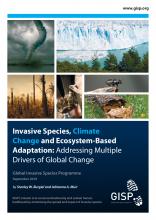Island invasives: scaling up to meet the challenge. Proceedings of the international conference on island invasives 2017


Island and Ocean Ecosystems, BRB
Available Online
Curto, E.
,
Escobar, J.
,
Jusim, P.
,
Schiavini, A.
2019
A pilot project for the eradication of beavers (Castor canadensis) in Tierra del Fuego started as part of a bi-national agreement, signed between Argentina and Chile, to restore the affected environments. The project covers nine pilot areas of different landscapes and land tenures in the Argentinian part of Isla Grande de Tierra del Fuego. We report on the results from operations in the fi rst of the pilot areas. From October 2016 to January 2017, ten trappers (named restorers for advocacy purposes) used body-grip traps, snares and an air rifle, in a first phase, which included 2,237 trapping nights and 1,168 trap-sets. Shooting eff orts were not monitored. Traps were set for 1,401 trapping-nights and caught 175 beavers at a success rate of 12.5% (captures per trap night). Snares were set for 936 snare-nights and caught 22 beavers at a success rate of 2.3%. Seven beavers were shot. Most beavers (65%) were removed during the fi rst week of trapping in the different watercourse sections. Stopping trapping for a week or more did not increase efficiency. From March to May 2017 restorers removed 24 survivors and/or reinvaders, including 10 from two previously untrapped colonies. Capture efficiency for this removal period was low for body-gripping traps but not for snares. The sex ratio of catches was 47% females to 53% males. The age structure of catches was 15% kits, 29% yearlings, 51% adults, with 4% not aged. An estimated total of 41 colonies was trapped, giving an average of 5.6 animals per colony. After nominal eradication was declared by restorers, 154 camera trapping nights were deployed to assess eradication success. Nine cameras (of 26 cameras used) detected beavers. Therefore, eradication was not achieved using the methods and eff orts in the first part of the pilot study. This highlights the need for more eff ort or the application of different techniques or trapping strategies. For example, daily checking of traps may cause the animals to be cautious so, the next step in the programme will involve exploring alternative trapping methods to reduce disturbance.


